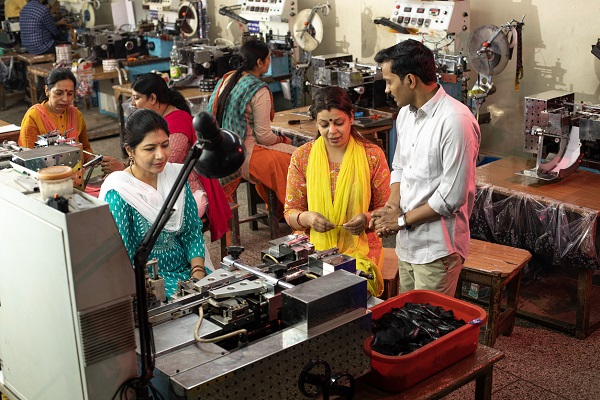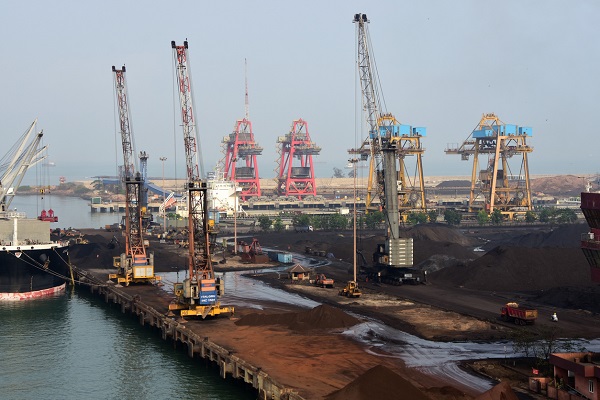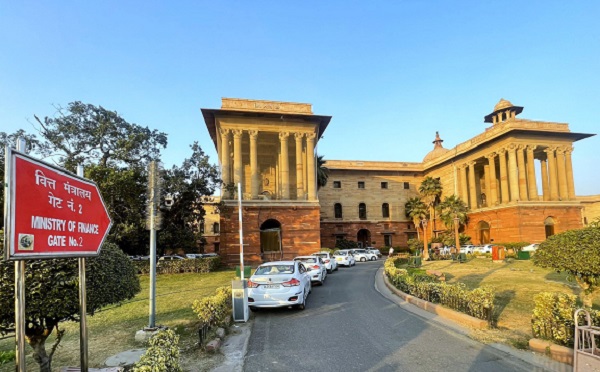.png)

Dr Hemachandra Padhan is an Assistant Professor, General Management and Economics, IIM Sambalpur.*
September 19, 2025 at 7:57 AM IST
The evolving tariff policies of the United States are poised to play a decisive role in shaping the trajectory of India’s Micro, Small, and Medium Enterprises. With the US pursuing a mix of protectionist measures to safeguard its domestic industries and recalibrate supply chains, Indian MSMEs find themselves at both risk and opportunity.
Current Scenario
- Vulnerability to Tariff Shifts
MSMEs in textiles, leather goods, gems & jewellery, auto components, and pharmaceuticals rely heavily on US markets. In 2025-26, India’s total MSME exports are projected at $83.2 billion, of which about $29 billion (35%) would go to the US. Even small tariff hikes could erode competitiveness by raising landed costs. - Global Value Chains
US tariffs on China have created openings for some Indian MSMEs, as buyers diversify sourcing. But inconsistent tariff regimes make long-term contracting difficult. - Cost Pressures
Compliance with labour, environment, and likely future carbon tariffs adds costs. Without rapid modernization, MSMEs risk exclusion from premium global supply chains.
Data Trends and Predictions
The projections in Table highlight a clear structural shift:
- Shrinking US Share: Exports to the US decline from 35% in 2025-26 to 18% by 2046-47, reflecting diversification.
- Overall Export Growth: Total MSME exports rise steadily, from $83.2 billion in 2025-26 to $268.2 billion in 2046-47, growing 4-6% annually.
- Employment Growth: MSME jobs expand from 110 million in 2025-26 to 140 million by 2046-47, supported by higher exports.
- Technology & Compliance: Tech adoption improves from a score of 30 (2025-26) to 85 (2046-47). But compliance costs rise nearly 80% over the same period, squeezing margins.
- Diversification: The market diversification index climbs from 40 to 78, showing stronger pivots toward Europe, ASEAN, Africa, and digital platforms.
The above table underlines how sector-specific dependencies shape risks and recovery:
- Textiles & Apparel (28-30% US share): At risk of losing 15–20% exports if tariffs rise, but could recover 50-60% through EU, Middle East and technical textiles.
- Gems & Jewellery (35-40% US share): Most vulnerable; could lose 20-25% exports. Recovery depends on branding and luxury retail pivots.
- Seafood (50-55% US share): Heaviest exposure; losses of 25-30% possible, but recovery up to 70% if cold-chain and market diversification succeed.
- Leather & Footwear (20-22% US share): Moderate exposure; recovery through design-led and domestic retail growth.
- Engineering Goods & Auto Components (10-12% US share): Least exposed; most orders can be redirected to ASEAN and Africa.
- Pharma & Chemicals (15–18% US share): Resilient due to FDA approvals; recovery 65–75%.
- Electronics & IT Hardware (8–10% US share): Tariff risk low; recovery through niche scaling.
- Handicrafts & Home Furnishings (25–28% US share): Sensitive to tariffs, but recovery via D2C e-commerce and premium branding.
Strategic Outlook
While US tariffs present immediate risks, they could catalyse long-term transformation of India’s MSME ecosystem. The data points to five key pathways:
- Diversification: By 2046–47, the US share of MSME exports halves, forcing stronger links with Europe, Africa, and ASEAN.
- Digital Platforms: Direct-to-consumer models will shield MSMEs from bulk tariff costs.
- Upgradation: PLI schemes, credit guarantees, and tech hubs will help MSMEs meet higher standards.
- High-Value Niches: Eco-friendly, design-intensive, and artisanal products will reduce tariff sensitivity.
- Geopolitics: India’s strategic ties with Washington may eventually secure selective tariff relief, particularly in pharma, renewables, and IT-enabled services.
India’s MSMEs stand at a crossroads. In the short run, tariffs will hurt cost-sensitive exports, especially in gems, jewellery, and seafood. But by 2046–47, the sector could more than triple its export value, double its diversification index, and employ 30 million more workers.
Whether India’s MSMEs emerge as resilient global suppliers or remain vulnerable exporters depends on one thing: how effectively India navigates the tariff maze while upgrading its manufacturing base and building global credibility.




